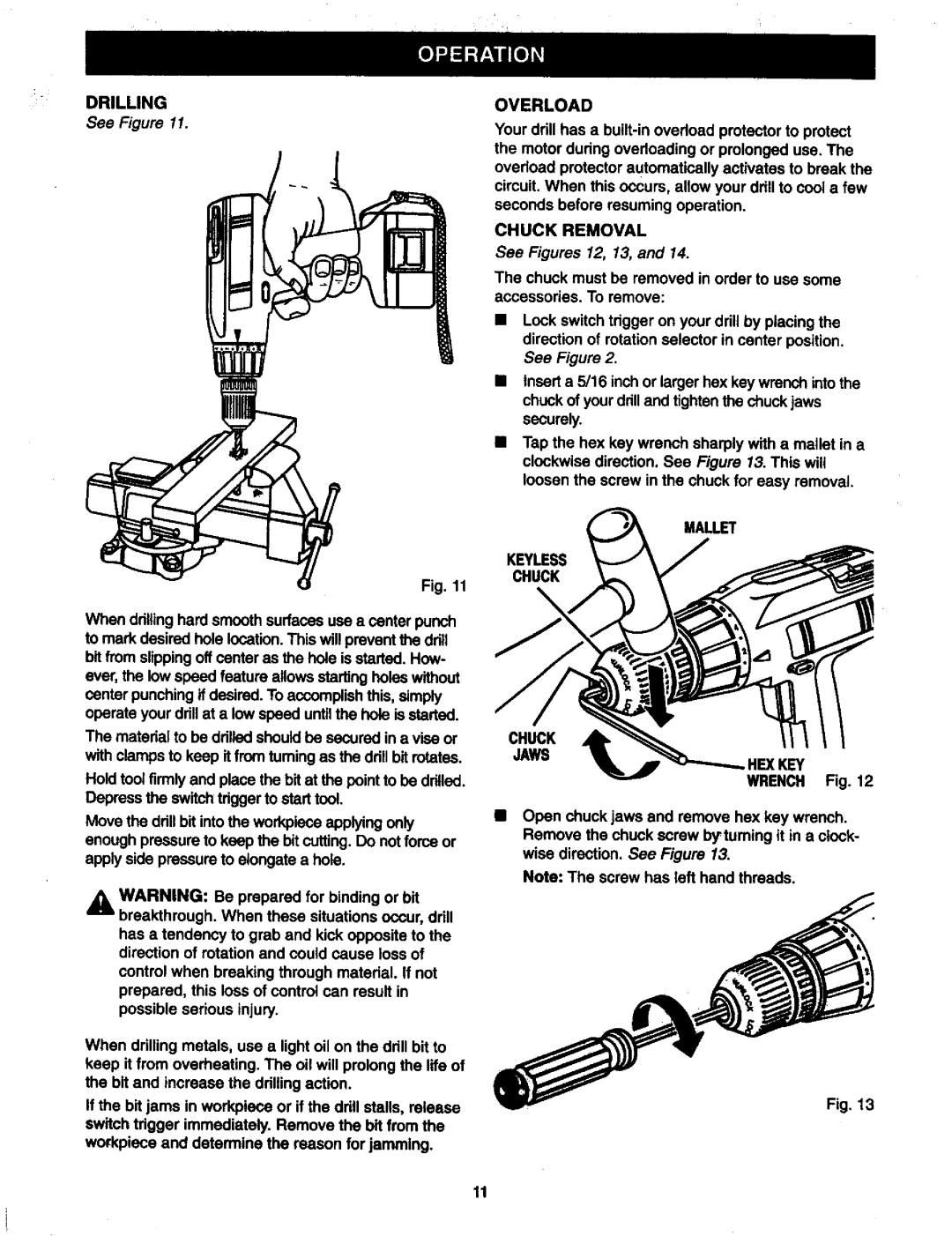
DRILLING
See Figure 11.
Fig. 11
When ddlling hard smooth surfaces use a canter punch to mark desired hole location. This will prevent the ddll bit from slippingoff center as the hole is started. How- ever, the low speed feature allows starting holes without center punching if desired. To accomplish this, simply operate your drillat a low speed until the hole is started. The matedal to be ddlled should be secured in a vise or with clamps to keep it from tuming as the ddll bit rotates. Hold tool firmly and place the bit at the point to be ddlled.
Depress the switch trigger to start tool.
Move the ddn bit into the workpisce applying only enough pressure to keep the bit cutting. Do not force or apply side pressure to elongate a hole.
WARNING: Be prepared for binding or bit breakthrough. When these situations occur, drill has a tendency to grab and kick opposite to the direction of rotation and could cause loss of control when breaking through material. If not prepared, this loss of control can result in possible serious injury.
When drilling metals, use a light oil on the ddll bit to keep it from overheating. The oil will prolong the life of the bit and increase the drilling action.
If the bit jams in workpiece or if the drill stalls, release switch trigger immediately. Remove the bit from the workpiece and determine the reason for jamming.
OVERLOAD
Your drill has a
CHUCK REMOVAL
See Figures 12, 13, and 14.
The chuck must be removed in order to use some accessories. To remove:
•Lock switch trigger on your drill by placing the direction of rotation selector in center position. See Figure 2.
•Insert a 5/16 inch or larger hex key wrench into the chuck of your drilland tighten the chuck jaws securely.
•Tap the hex key wrench sharply with a mallet in a clockwise direction. See Figure 13. This will loosen the screw in the chuck for easy removal.
MALLET
KEYLESS
CHUCK
\
CHUCK
JAWS
.HEX KEY WRENCH Fig. 12
Open chuck jaws and remove hex key wrench. Remove the chuck screw by'tumingit in a clock- wise direction. See Figure 13.
Note: The screw has left hand threads.
Fig. 13
11
